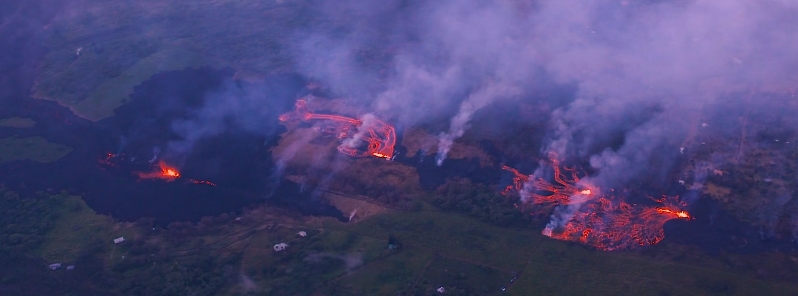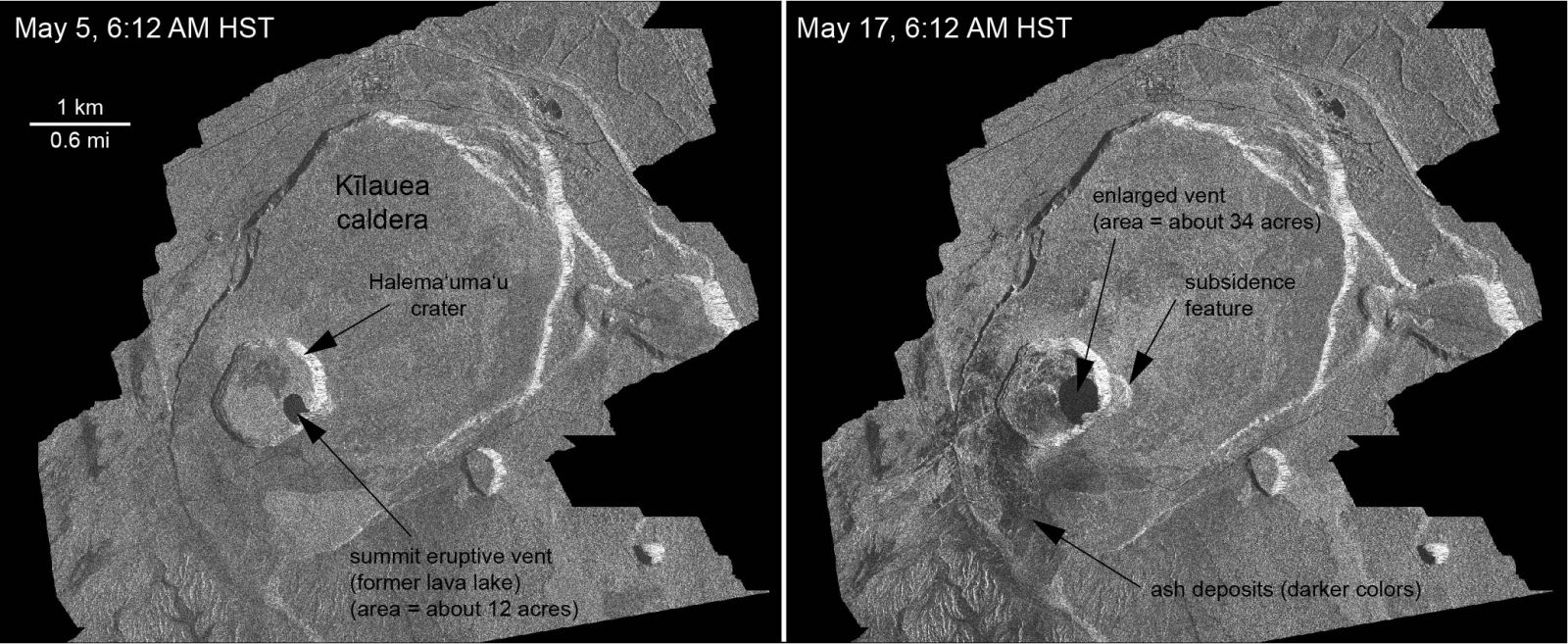Kilauea volcano update: eruption of lava and ground cracking continues, short-lived explosion at Halema’uma’u

A moderate-level eruption of lava continues from multiple points along the central and northeast end of the active fissure system at Hawaiian Kilauea volcano. Residents in lower Puna should remain informed and heed Hawaii County Civil Defense closures, warnings, and messages.
At 09:58 UTC on May 19 (23:58 HST, May 18), a short-lived explosion at Halema'uma'u created an ash cloud that reached up to 4 km (10 000 feet) above sea level and was carried southwest by the wind. Possible trace ash fall may have occurred along Highway 11, the Hawaii Volcano Observatory said in their 11:33 UTC update.
The eruption of lava and ground cracking in the area of Leilani Estates subdivision continues.
A fast-moving pahoehoe lava flow that emerged from fissure 20 during the afternoon hours of May 18 (local time) continues to flow southeast. The flow has three main lobes.
The easternmost is east of Pohoiki Road and is moving about 210 m (230 yards) per hour. The westernmost of the lobes is near Malamaki Road and is moving at about 36 m (40 yards) per hour.
These rates may change with time and USGS crews are in the area to monitor flow advance.
Other fissures remain weakly active and volcanic gas emissions remain elevated throughout the area downwind. Smoke from burning vegetation as lava flows advance is also contributing to poor air quality.
Magma continues to be supplied to the lower East Rift Zone as indicated by the continued northwest displacement of a GPS monitoring station. Elevated earthquake activity continues, but earthquake locations have not moved farther downrift in the past couple of days.
Additional explosive events that could produce minor amounts of ashfall, ground cracking and outbreaks of lava are possible in the area. Residents downslope of the region of fissures should heed all Count of Hawaii Civil Defense messages and warnings.
- Webcam images: https://volcanoes.usgs.gov/
volcanoes/kilauea/multimedia_ webcams.html - Photos/Video: https://volcanoes.usgs.gov/
volcanoes/kilauea/multimedia_ chronology.html - Lava Flow Maps: https://volcanoes.usgs.gov/
volcanoes/kilauea/multimedia_ maps.html


Radar amplitude images above were acquired by the Italian Space Agency's Cosmo-SkyMed satellite system and show changes to the caldera area of Kīlauea Volcano that occurred between May 5 at 6:12 a.m. HST (left) and May 17 at 6:12 a.m. HST (right).
The satellite transmits a radar signal at the surface and measures the strength of the reflection, with bright areas indicating a strong reflection and dark areas a weak reflection. Strong reflections indicate rough surfaces or slopes that point back at the radar, while weak reflections come from smooth surfaces or slopes angled away from the radar.
The May 17 image was acquired after two small explosions from the summit eruptive vent.
Major changes with respect to the May 5 image include:
(1) a darkening of the terrain south of Halema‘uma‘u, which may reflect accumulation of ash over the 12-day period between the images;
(2) enlargement of the summit eruptive vent on the floor of Halema‘uma‘u, from about 4.8 ha (12 acres) on May 5 to about 13.7 m (34 acres) on May 17; and
(3) the development of a small depression (area of about 6 ha / 15 acres) on the east rim of Halema‘uma‘u that reflects slumping of a portion of the rim towards the growing collapse pit on the crater floor.
Featured image credit: Mick Kalber, Paradise Helicopters, Tropical Visions Video

Been there a few times and so sad to see this happen. I was in the last trip to see the volcano back in the middle nineties